William Efe-Laborde is an independent French bespoke shoemaker living in London.

Even France has a very strong culture and community for bespoke crafts, William found this passion in England. We can regard him as self-taught because he doesn’t have any official job or apprentice in those prestigious houses, and this speaks a lot about his talent and determination.
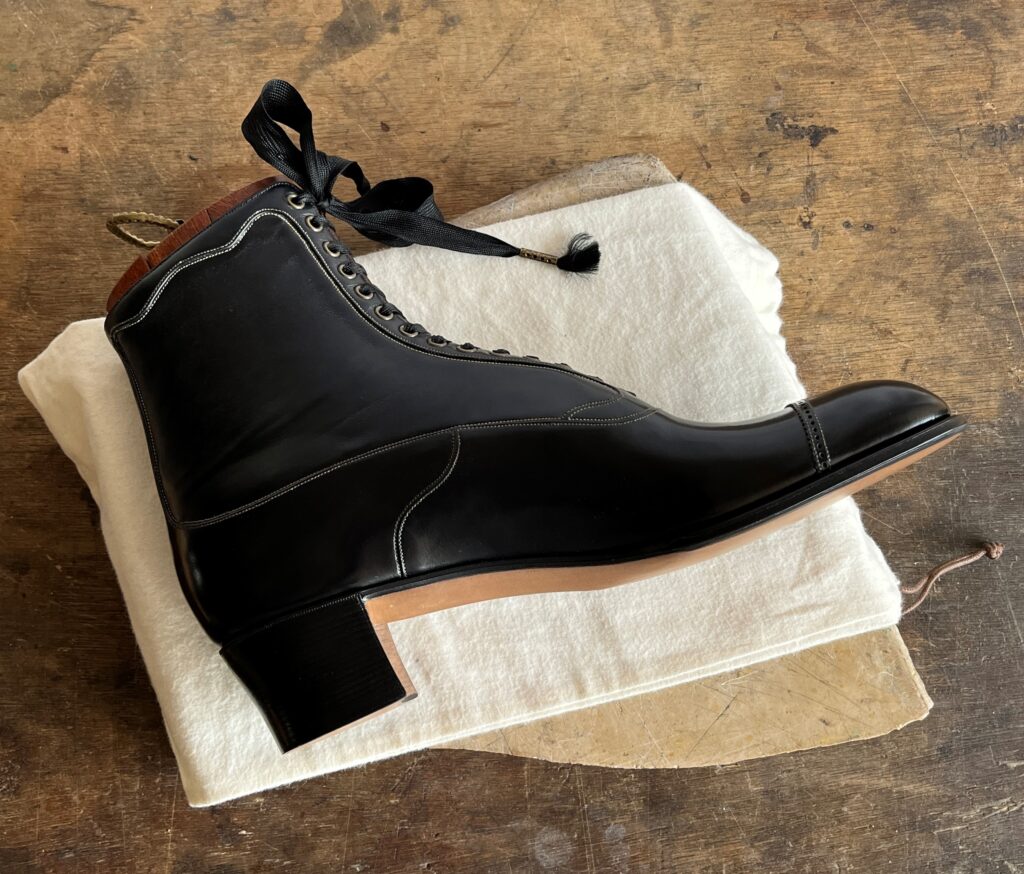
Rank as the 5th in 2023 World Championships of Shoemaking, he is getting more and more attention around the world.
I am very honoured to have this opportunity to talk with him.
Briefly introduce yourself please.

I am a British bootmaker specialising in London’s West End tradition of bespoke shoemaking.
I work as an independent craftsman, and I oversee each step of the footwear I make from measurement to finish.
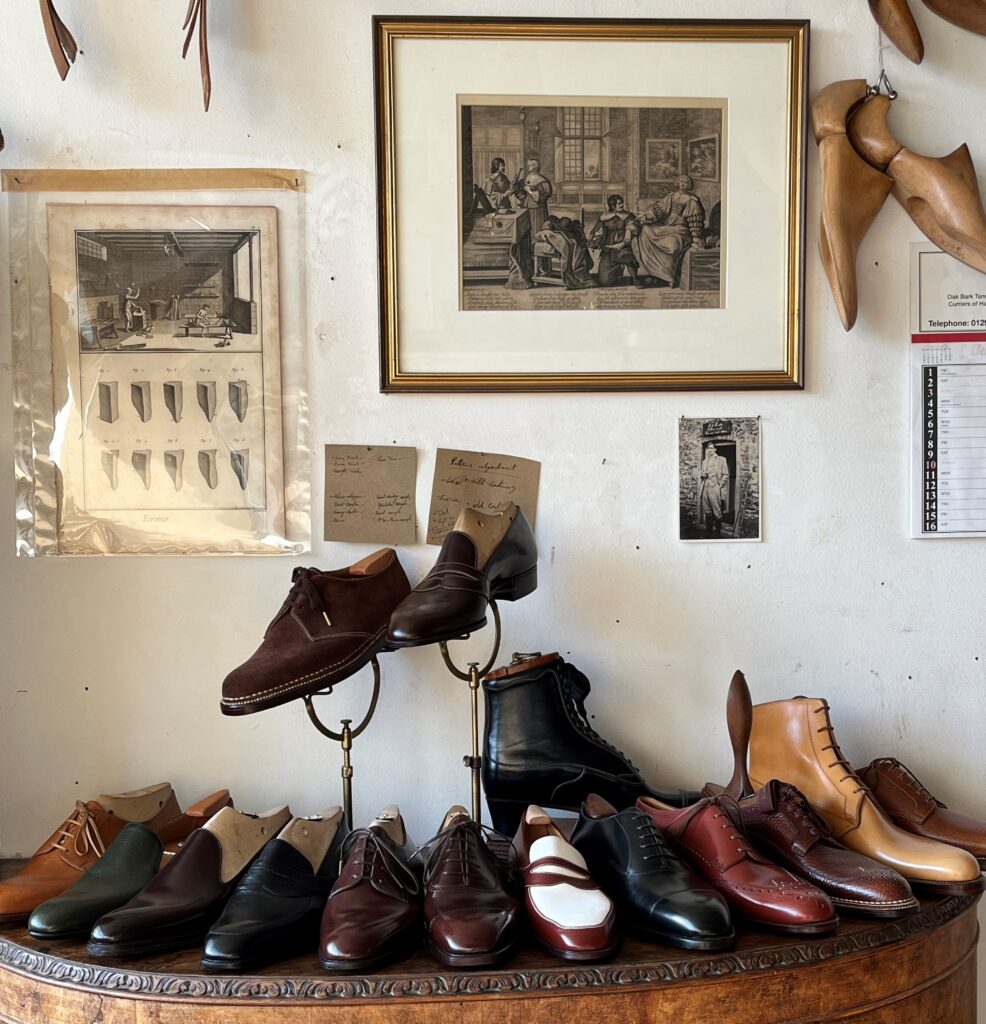
As a brand we offer slippers, shoes and boots: all entirely handsewn and made from a choice of modern and finest vintage leather stocks.
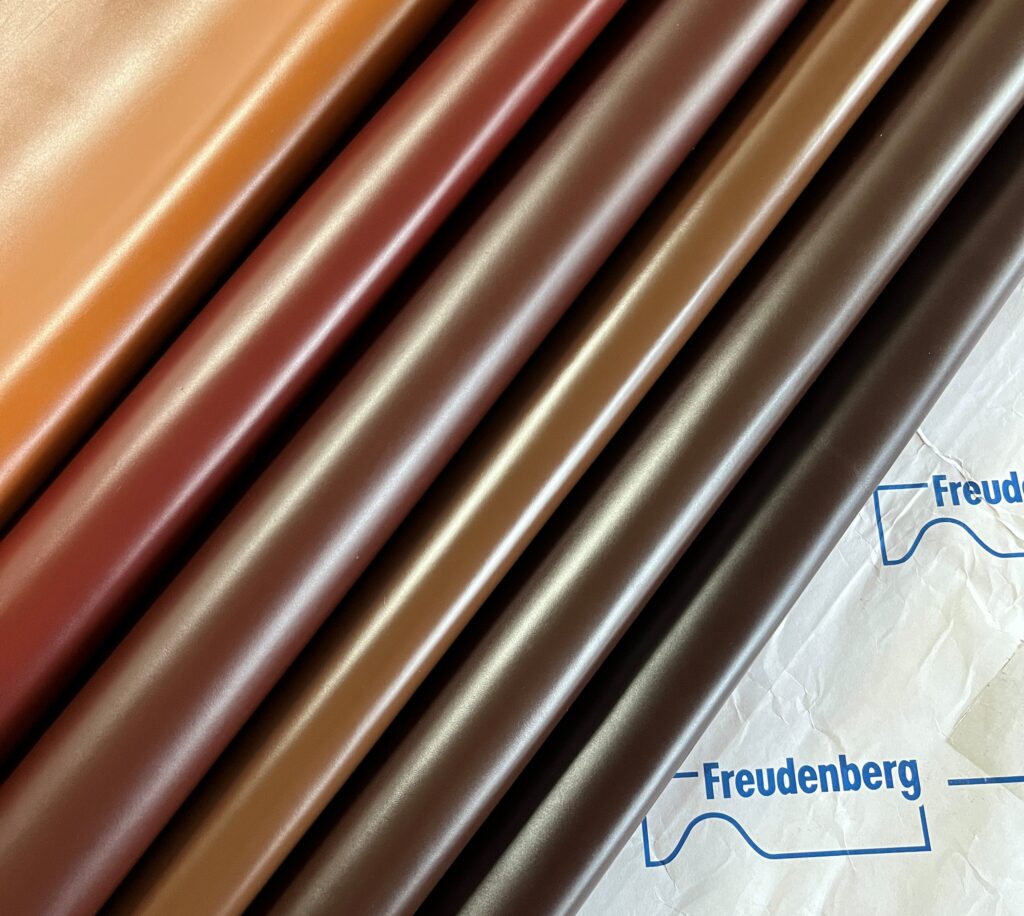
Both France and England have strong culture of bespoke shoemaking, why did you choose England over France?
That’s right, the strong shoemaking culture which exists today in England and France finds its origins deep rooted many centuries ago. The modern technique that we use is unchanged and documented for the first time around the 17th century, but it is likely older.
As a young boy I grew up in France and later moved to the UK to go to University. I have lived in each country for exactly 17 years at present.
This being the case, I did not make a choice between French or British culture, it was simply that I discovered the craft and my vocation after moving to England. I have a lot of admiration for the way it takes form in both countries, but I think the British style is more suited to my temperament.
Did you go to some shoemaking school or course? If not, how did you learn shoemaking?
Bespoke shoes came to my attention whilst working in London’s art trade, which is a discreet and old fashioned social environment.
Initially, I began by taking evening classes after work. Luckily, my good friend Oliver Bedeman who is a painter, invited me to use his studio at night so I could continue to experiment. From there, I quickly found a workshop of my own in the same building.
I began visiting regularly with senior craftsmen working for the West End during my personal time and going back to the workshop to apply my learning. In this way I learned about last making, pattern making and bottom making.
I also accumulated many old books and accumulated shoe tools specifically made in London.
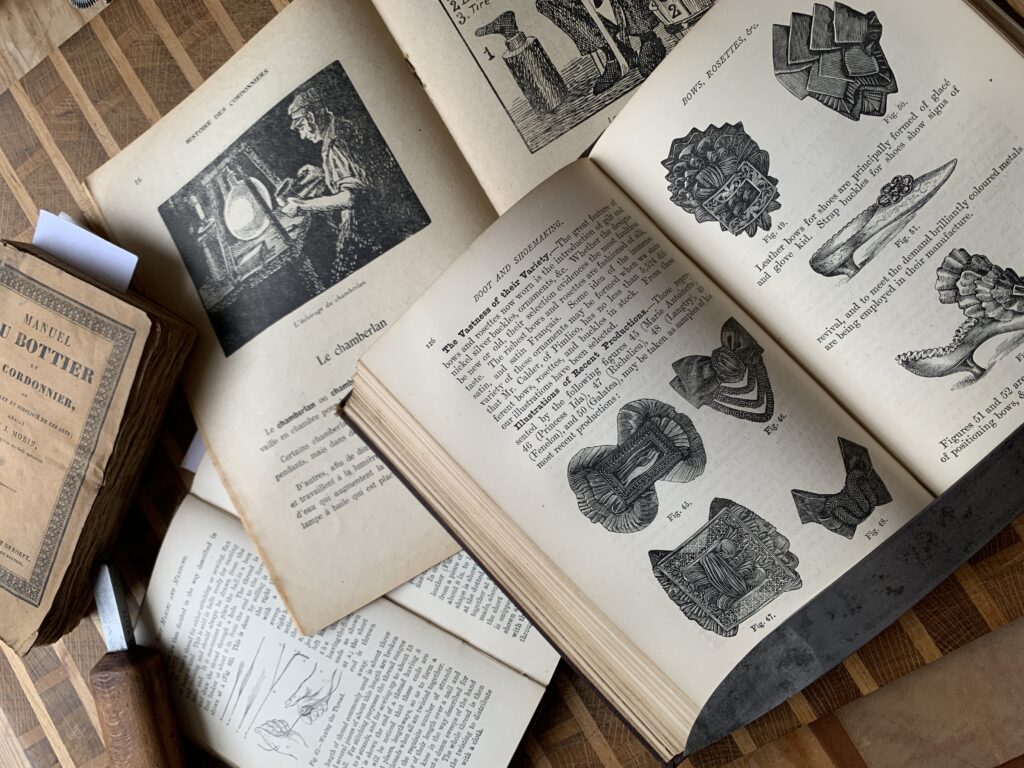
This journey took about 6-7 years of learning and improving until I reached a professional level which I was satisfied to offer publicly.
During the study, who is your most admired tutor(s)?
I have had 3 main influences in my journey, three master craftsmen with 30-40 years of experience each.
However, for the purpose of this interview I want to pay my respects to Jason Amesbury in particular, who unfortunately passed away earlier this year.
Jason trained at Lobb in St James and worked there many years. After 20 years or so, he took the step of becoming an independent shoemaker in the mid 1990s.
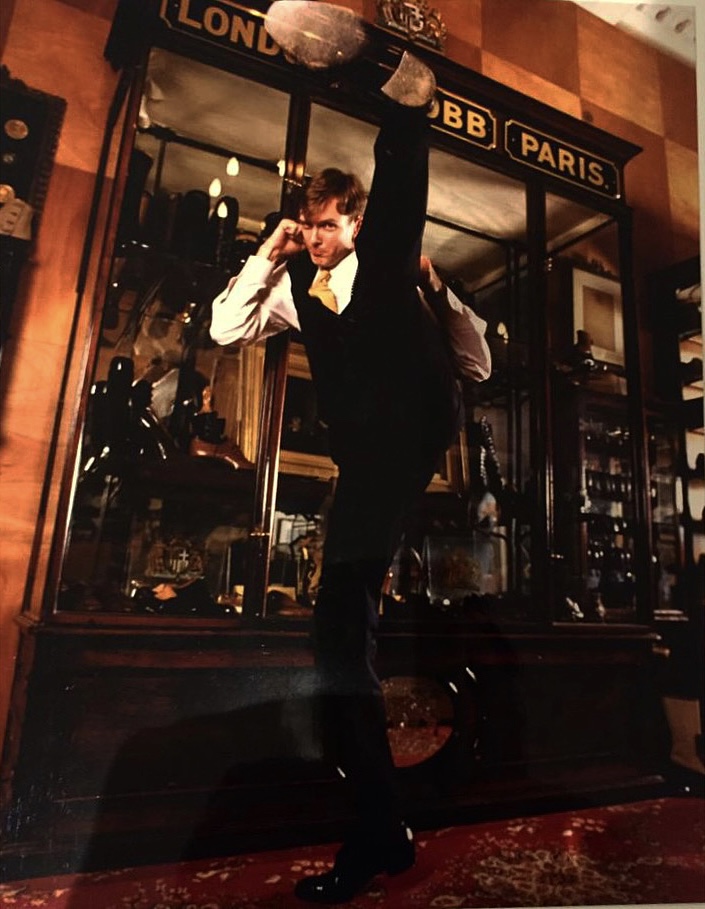
In my eyes and those of many around him, he is considered a true Master Bootmaker.
There are many very competent and talented shoemakers nowadays, but this title of recognition is an increasingly rare one which denotes a craftsman who can share instruction on most aspects of the craft.
Although he was principally a gifted Lastmaker and Pattern maker, with great flow, he also knew about many techniques and spoke of the culture of the craft with inspiring words, through countless great stories.
Whether on the manner of handling leather, carving lasts, fitting the foot for men or women (“the dark arts”), cutting patterns, welted technique, boots, shoes with wooden heels, slippers, turn shoes – few were acquainted with as many techniques or in-depth knowledge as he was.
In addition he had a wonderful dress sense, which was a reflection of his culture.
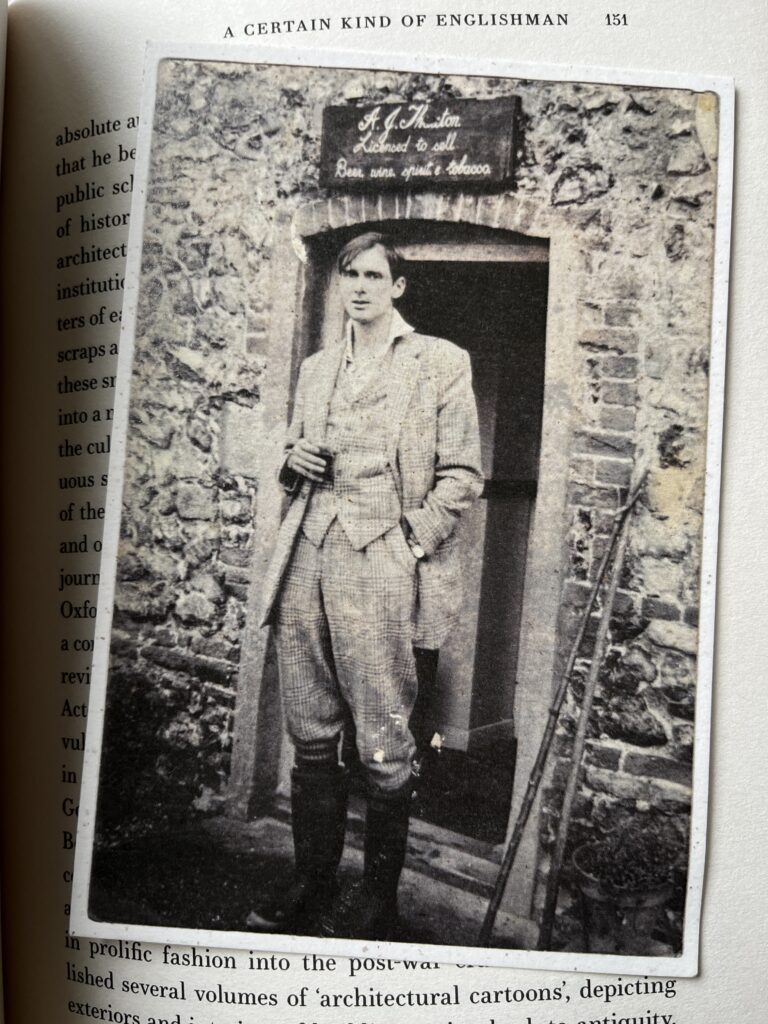
So his memory serves as an inspiration to me everyday and I hope one day to know and be able to do as much as he did, so that I can also transmit it to the next shoemaker, as he did.
How do you describe English shoes?
I think a true English shoe, in the traditional sense – is a shoe which strikes a balance between style and functionality.

The number one question is “what is the occasion for which the shoe is designed?” (function) and secondly “how can it best answer the requirements of the occasion?” (style)
Whichever way – style and functionality are firmly grounded.
To help your readers better conceive this, please consider for example an Oxford shoe made with country grain leather. Although it has been seen many times on Instagram, for me it is inconceivable. It would be an immediate indicator this is not an English shoe – there exists no occasion to wear a city shoe such as the Oxford cut, made of leather designed with the rugged countryside and green pastures in mind. Of course, the novelty of such a shoe will be sure to draw attention from the viewer, but when carefully considered – the conclusion is that it lacks philosophical grounding, it has no purpose or genuine use. More detrimental still, because it enjoys no clear purpose, it will not enjoy usage through daily life and across time to eventually be considered a ‘classic shoe’.

Styling a country shoe with a beveled waist is another predominant example of flawed application, according to English tradition.
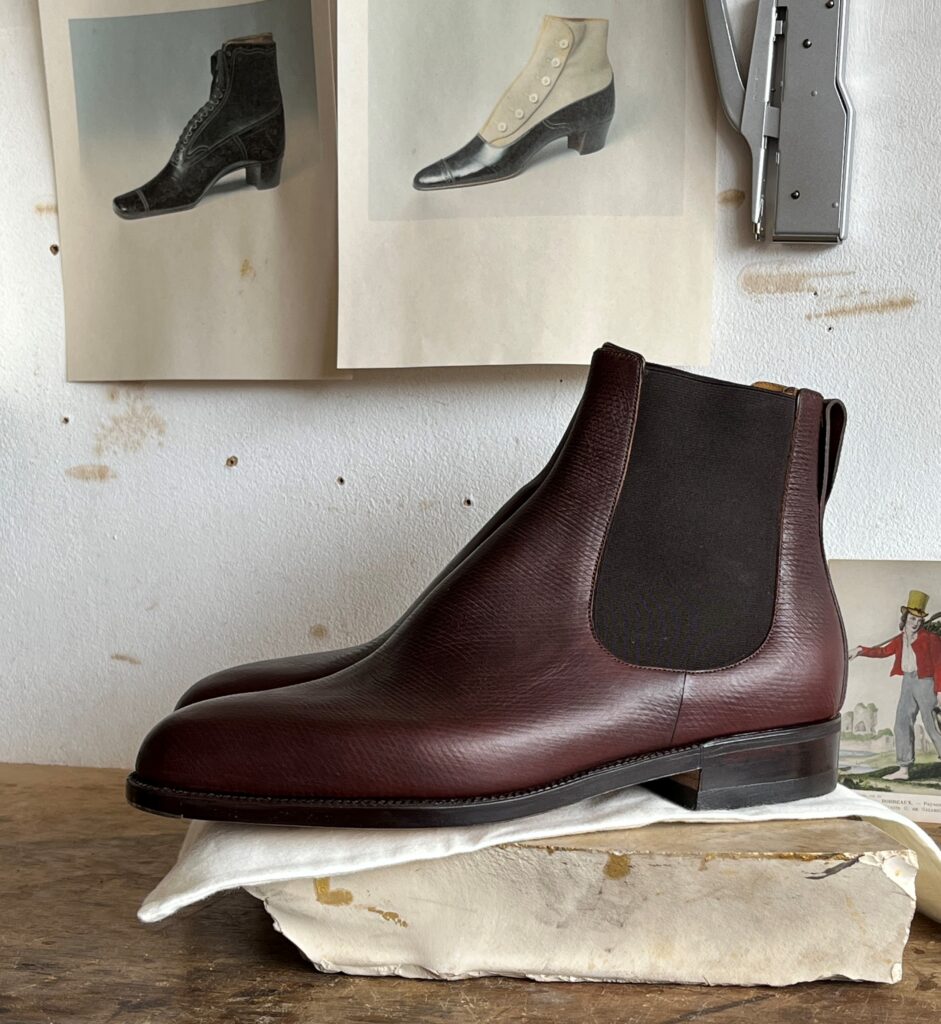
I hope this will not hurt the sensibilities of other craftsmen, it is simply under this pragmatic thinking that English style operates.
What is your house style, does it combine English and French aesthetics?
My house style is first and above all else defined by classic British aesthetic and more precisely the heritage of West End bespoke shoemaking. This is reflected in the pattern proportions, the styling and choice of leathers which are all informed by this tradition.
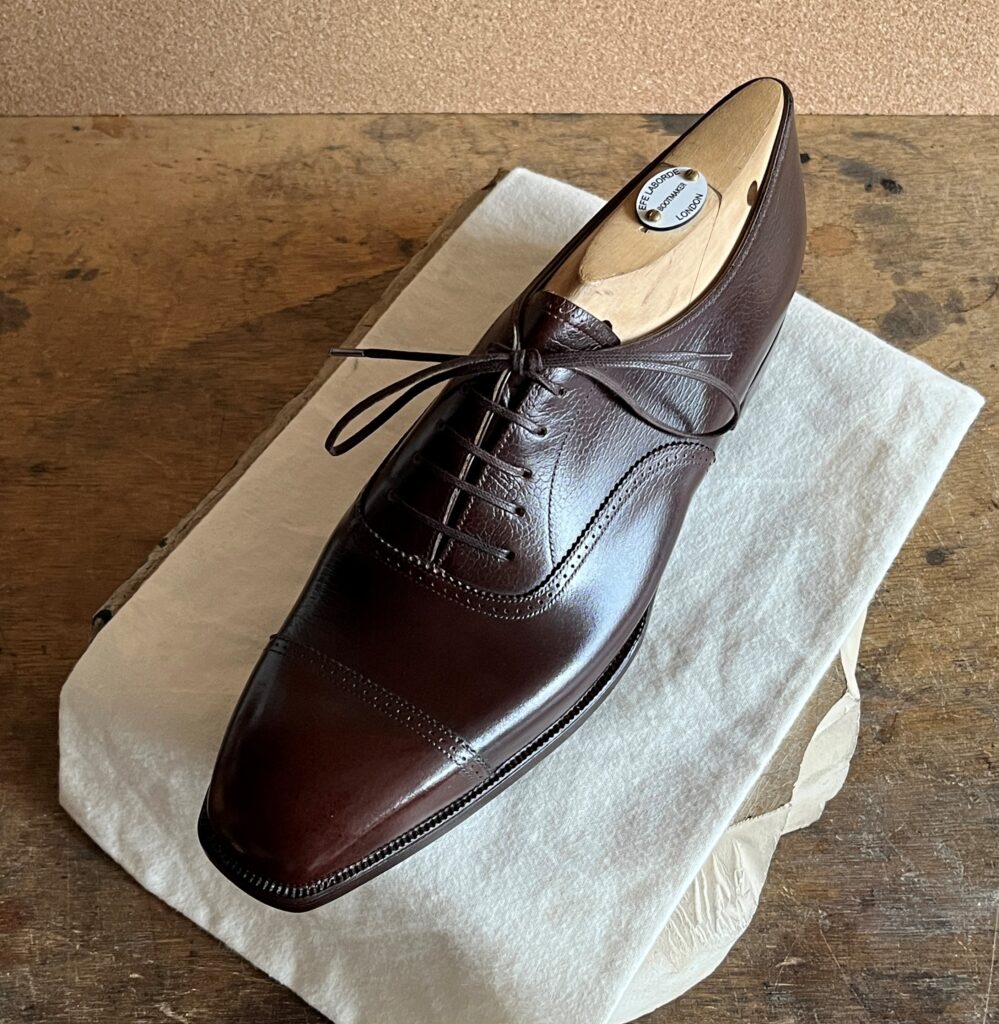
It is also useful to know that throughout the 19th and 20th centuries, this tradition was influenced by cross pollination with French shoemaking, Hungarian skills and the immigration of gifted Polish shoemakers whose work was greatly admired. Therefore remnants of these historical influences will also be reflected in the house style.
Unlike bespoke shoemakers in the rest of the world, England still emphasizes houses with heritage such as John Lobb and George Cleverley, how do you think the life of independent bespoke shoemakers in UK?
In the perception of many, a new ecosystem has been emerging in England around the bespoke shoe trade for a few decades.
At the beginning of the 1900s, London was dominated by big family shops offering bespoke and hand welted luxury shoes. Peal’s, Lobb’s, Church’s, Foster’s, Taylor’s, Maxwell’s, Tuczek’s and many more…
Then around the 60s and 70s independent shoemakers operated by a single craftsman began to appear: Anthony Cleverley (a cousin of George Cleverley), Eric Cook, then later in the 90s Jason Amesbury, then further on in the 2010s Nicholas Templeman, Emiko Matsuda, Dominic Casey and so forth.
The typical progression was for people to learn in big houses and then move on to be independent. Big houses had supremacy and independent shoemakers were like ‘pilot fish’.
Nonetheless it appears this relation is changing somewhat and a new codependency is developing.
Due to the internet, independent bespoke makers have gained more importance and recognition. Makers now occasionally receive workers from the big firms for tuition, or to advise on materials or technique for example. Whereas people working in the big firms have the possibility to consider their work purely a means of employment and income, to operate as an independent is a challenge which demands greater determination and a sense of vocation. This gives rise to competence and skill.
As a result, heritage houses and independents have become mutually beneficial to each other, supporting the English tradition of the craft.
How do you feel the price of your service? For most people, it is still very steep to afford, do you agree?
Thank you for addressing this question, I think it is a very important one for your readers.
The shoes which come out of my workshop bare my name and benefit of my meticulous attention at every stage, with each individual customer in mind.
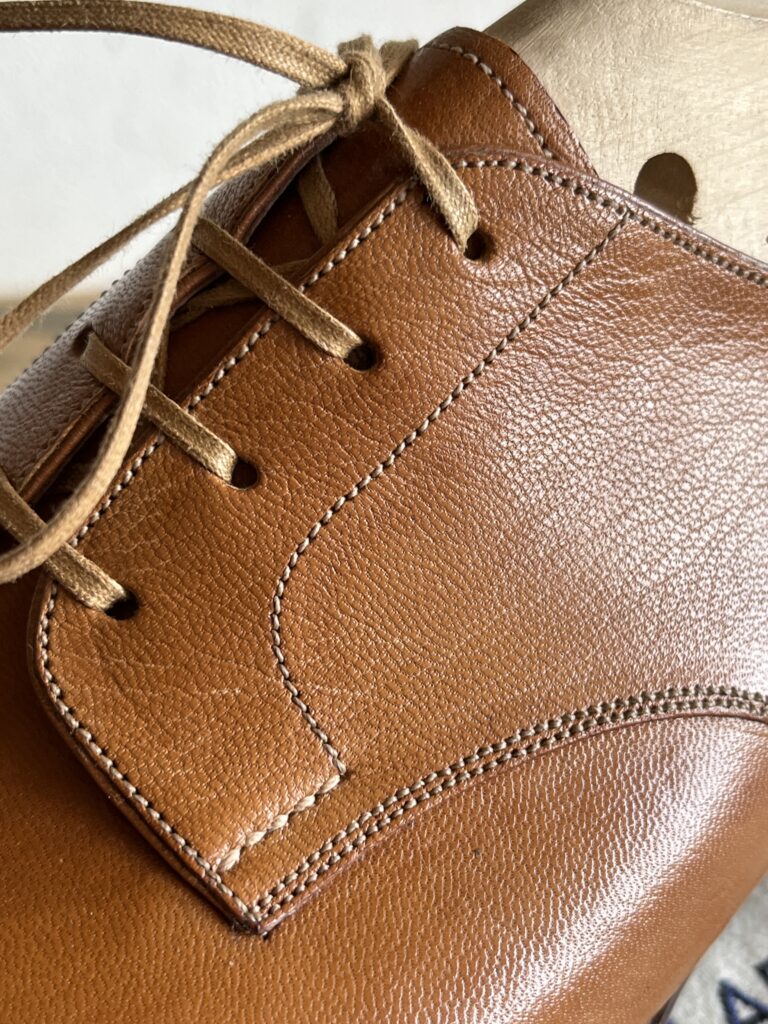
The shoes are made in accordance with a centuries old tradition. It dictates that the finest materials and technique must be used at every stage, irrelevant of whether it is visible or not at the end by the customer, in order to ensure longevity and virtue of the product.
Not every bespoke craftsman is bound by these ideals and this tradition.
In addition, everything is made here on site in the center of London. It has an associated repercussion on cost but it also means that I am in contact with the spirit and history of this city, that cultural heritage which has been recognised as so unique globally.
Coming to me for shoes is maybe similar to searching for a classic Qianlong vase for example. Aside from the expense, discernment and knowledge of what you are searching for is required.
If however, you are simply searching for a ceramic pot to make a warming cup of tea, the Qianlong vase becomes irrelevant, and there is broader choice on the marketplace.
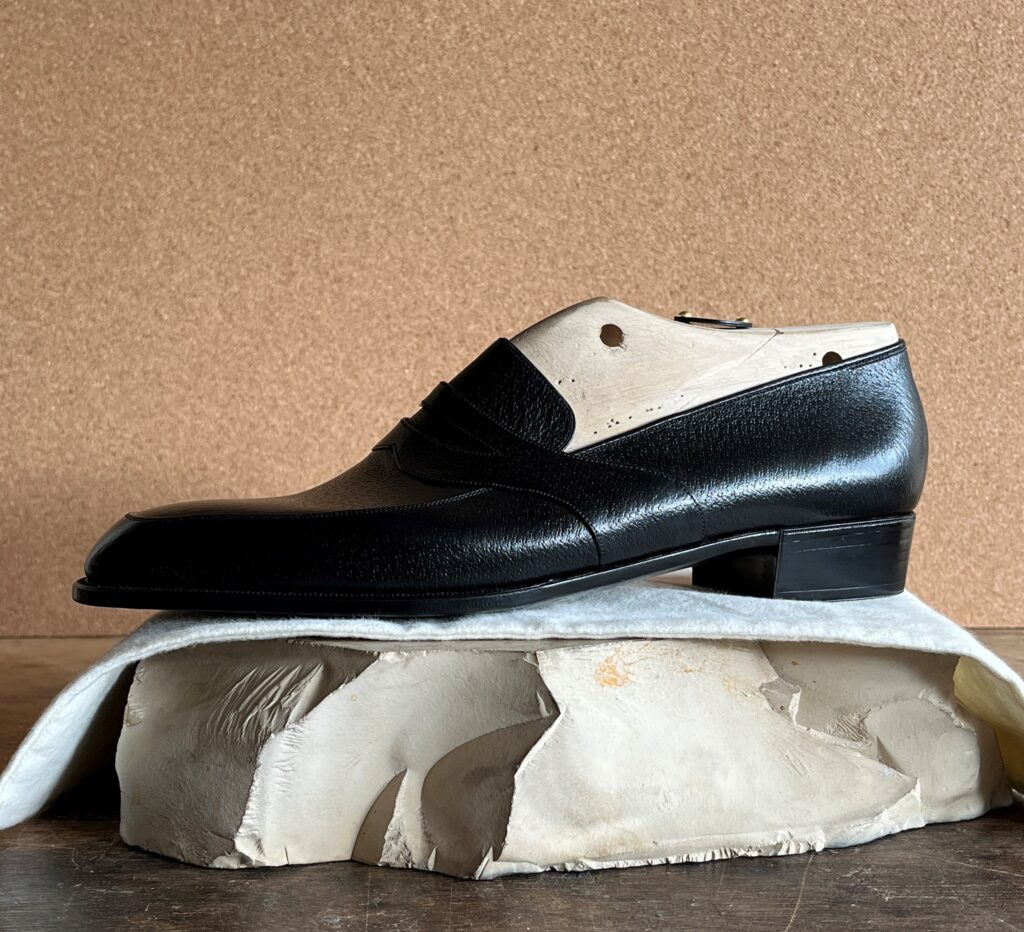
Therefore the question of cost is linked to the virtues a customer seeks.
Do you work with customers around the world, how do you feel their different preference on shoes?
Since January, approximately 35 pairs of shoes have been completed, for customers from America, Asia, Europe and the Middle East. What is evident from every pair is that the shoes have a tendency to be a reflection of the wearer’s personality, maturity and the setting in which they want to wear the shoes, rather than their nationality.
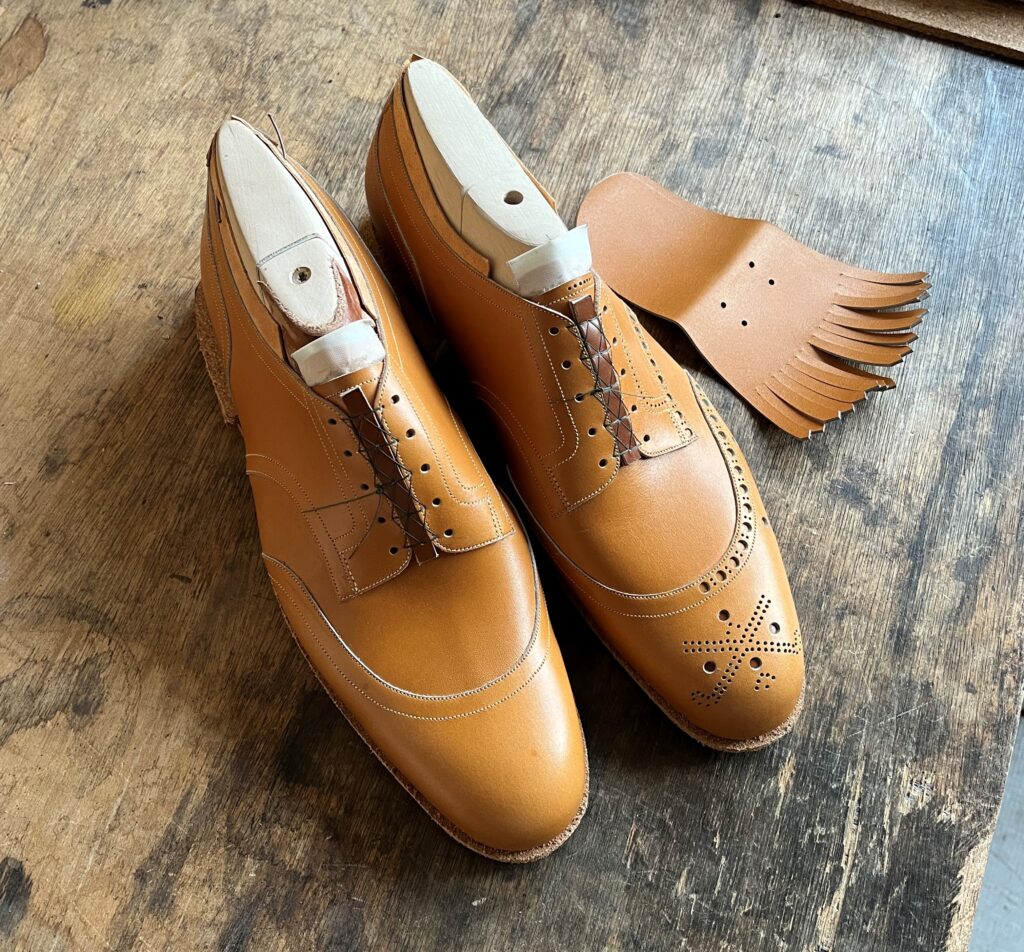
Thankfully, this is as bespoke shoes should be in my view.
When will you plan your trunk shows around the world? I believe many Chinese shoe lovers are very interested in trying your service.
I am always eager to share my passion for shoes, in Asia especially because there is a true appreciation for craft.

There are no dates currently set but I am optimistic and hope to be able to offer my services soon.
Price and delivery time.
Final delivery is estimated after 8-10 months and includes 2 fitting appointments.
Prices (excl. Taxes):
– Slippers: From 3400 GBP
– Shoes/Collection: From 3800 GBP
– Boots: From 4300 GBP
